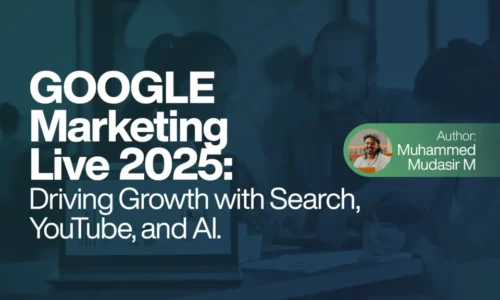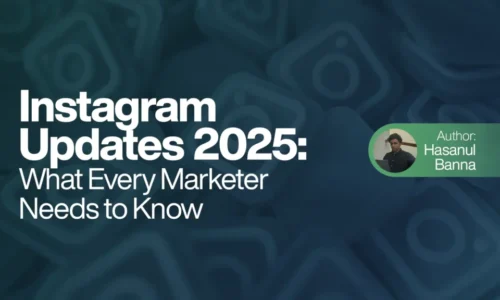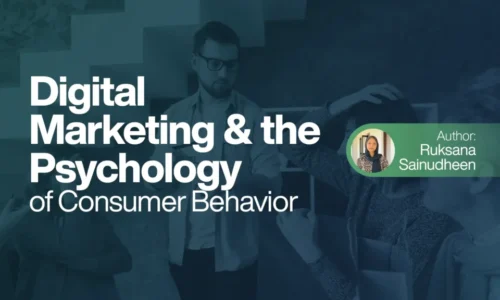The Power of Interactive Content in Digital Marketing: A New Way to Engage Your Audience
In today’s fast-paced digital world, capturing people’s attention has become harder than ever. Static posts, plain articles, and simple advertisements often fail to keep users engaged.. It’s a game-changer in digital marketing, offering exciting ways to connect with your audience and keep them involved.
So, what exactly is interactive content? Why is it so powerful? And how can you use it to grow your business and achieve your goals? Let’s explore these questions in detail.
Table of Contents
What is Interactive Content?
Interactive content is any type of content that requires the audience to actively participate rather than just consume. It’s not just about watching, reading, or scrolling, it’s about engaging and interacting. This can include tests, polls, surveys, calculators, games, and even videos where users make choices to decide what happens next.
Examples of Interactive Content
Here are some common types of interactive content you’ve probably come across:
- Tests: For example, “Which type of traveler are you? or What’s your personality type?
- Polls: Quick questions that le4t people vote and see instant results.
- Surveys: Tools to gather feedback or opinions from your audience.
- Calculators: Useful tools like loan calculators or savings estimators.
- Interactive Videos: Videos where users can click to make choices and influence the story.
- Games: Fun, simple games that entertain while promoting your brand.
Why is Interactive Content Powerful?
Interactive content is not just a trend; it’s an essential tool in modern digital marketing. Here are the main reasons why it works so well:
1. Grabs Attention Quickly
In the crowded online space, grabbing someone’s attention is challenging. Interactive content stands out because it invites people to participate. Instead of scrolling past, they stop and engage, which means your content makes an impact.
2. Increases Engagement
Engaged users spend more time on your website or social media page. Interactive content like quizzes or polls keeps people interested longer compared to static text or images. The longer they stay, the more likely they are to take action, like signing up or making a purchase.
3. Builds a Connection with Your Audience
Interactive content makes users feel involved. It’s like having a conversation rather than giving a one-sided message. This creates a stronger emotional bond with your brand and builds trust.
4. Collects Valuable Data
When people interact with your content, they often share information about their preferences, needs, and opinions. For example, a survey can help you understand what your customers are looking for. This data is incredibly valuable for creating personalized marketing campaigns.
5. Encourages Social Sharing
People love sharing fun and engaging experiences. Interactive content like quizzes or polls often gets shared on social media, helping your brand reach a wider audience without extra advertising costs.
6. Boosts Conversion Rates
Interactive content keeps users engaged and leads them toward a specific action. For example, a product recommendation quiz can guide customers to the right product, increasing the chances of a sale.
Here are different ways to express the idea of using interactive content in digital marketing:
Interactive content grabs attention, boosts engagement, and improves customer experience. Using quizzes, polls, games, and interactive videos in your marketing strategy can increase leads and conversions. It makes your brand more engaging and helps build stronger customer connections.
1. Understand Your Audience
The first step is to know your audience. What do they enjoy? What problems do they want to solve? For example:
- Younger audiences might enjoy playful quizzes and games.
- Professionals might prefer calculators or informative surveys.
Tailoring your content to your audience ensures it’s engaging and relevant.
2. Set Clear Goals
Interactive content can serve many purposes. Decide what you want to achieve, such as:
- Increasing social media engagement.
- Collecting customer feedback.
- Driving website traffic.
- Boosting product sales.
Your goal will determine the type of interactive content you should create.
3. Keep It Simple and Fun
Interactive content should be easy to use and enjoyable to everyone. Avoid complicated designs or lengthy processes that might frustrate users. For example, a quiz should have a few quick questions with exciting results.
4. Promote Your Content Everywhere
Once you create interactive content, share it across all your marketing channels. Post it on your website, promote it on social media, include it in emails, and use it in paid ads to maximize its reach.
5. Analyze the Results
Track how your interactive content performs. Use analytics tools to measure metrics like engagement, time spent, and conversion rates. This data will help you understand what works and improve future campaigns.
Real-Life Examples of Interactive Content
Let’s look at some successful examples of how brands use interactive content: Quizzes for personalized recommendations, polls for customer feedback, interactive videos for engagement, calculators for budgeting, and gamified experiences to boost user participation. These strategies help brands connect with their audience and drive better results.
1. BuzzFeed Tests
BuzzFeed is famous for its fun and engaging quizzes like “What type of dog matches your personality?” These quizzes are widely shared on social media, driving massive traffic to their website.
2. Nike’s Shoe Finder
Nike offers an interactive tool that helps customers find the best shoes based on their needs and preferences. This improves the shopping experience and increases sales.
3. Instagram Polls and Questions
Brands often use Instagram Stories to run polls or ask questions. This creates direct interaction with followers and boosts engagement.
4. HubSpot’s Marketing Grader
HubSpot provides a free tool that grades your website’s marketing performance and gives personalized tips. This positions them as helpful and trustworthy, attracting potential customers.
Benefits of Interactive Content
To summarize, here are the key benefits of using interactive content in digital marketing:
- Higher Engagement: Keeps users interested and active.
- Better Insights: Helps you understand your audience’s needs.
- Stronger Relationships: Builds trust and loyalty.
- Wider Reach: Encourages sharing on social media.
- More Conversions: Leads to better sales and actions.
Conclusion
Interactive content is the future of digital marketing. It’s engaging, fun, and highly effective at connecting with your audience. By using tools like quizzes, polls, and interactive videos, you can stand out from the competition and create memorable experiences for your customers.
So, if you haven’t tried interactive content yet, now is the time to start. Explore different formats, experiment with your ideas, and see how it transforms your marketing efforts.
Interactive content isn’t just about attracting attention—it’s about building lasting
Author Info
Fathima Basila, a Freelance digital marketer in Palakkad.
Learner of CDA Digital Marketing Academy in Kerala.



